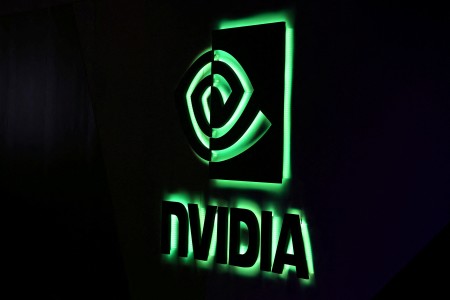By Lewis Krauskopf
NEW YORK (Reuters) – A rally that has propelled U.S. equities to record highs increasingly rests on red-hot chipmaker Nvidia and a handful of other giant stocks, reviving concerns that the market’s performance has become tied to a cluster of companies.
About 60% of the S&P 500’s total return of more than 12% for the year has been driven by five companies whose shares have some of the heaviest weightings in the index: Nvidia, Microsoft, Meta Platforms, Alphabet and Amazon.com, data from S&P Dow Jones Indices showed.
Nvidia – which on Wednesday became the world’s second-most valuable company following a 147% run this year – has alone accounted for about a third of the index’s gain.
As the companies’ share prices have rallied, their weightings in the S&P 500 have grown, giving them more sway over the broader index. The top four stocks – Microsoft, Apple, Nvidia and Alphabet – accounted for nearly 24% of the S&P 500 at the end of May, the biggest collective weight for four stocks in 60 years, according to Bianco Research.
Many investors believe the companies’ market heft is deserved, given their robust earnings, dominant competitive positions and expectation they will capitalize on advances in the burgeoning artificial-intelligence field. But some are concerned the concentration of gains in a handful of powerhouses could threaten indexes if some of the big names start to wobble.
“If these names stop performing well … and we don’t see the rest of the market providing that support, that could potentially be a source of vulnerability,” said Angelo Kourkafas, senior investment strategist at Edward Jones.
A look at the ten largest stocks in the S&P 500, meanwhile, shows their weighting ballooned to 34.1% at the end of May, the highest-ever month-end weight for the index’s top ten, said Howard Silverblatt, senior index analyst at S&P Dow Jones Indices.
Concerns over market concentration have arisen repeatedly in recent years. The S&P 500’s 24% gain in 2023 – when recession worries attracted investors to larger companies that are less exposed to the economy’s fluctuations – was propelled by eye-popping increases from a group of megacap tech and growth stocks dubbed the “Magnificent Seven.” While those stocks soared, large swaths of the market remained tepid, even though a recession did not come to pass.
Signs of broadening emerged in the first quarter of 2024, when the financials, energy and industrials sectors all outperformed the S&P 500. Those groups have declined in the second quarter, however, even as the broad index has pushed higher.
The equal-weight S&P 500 – a proxy for the average stock in the index – has pared earlier gains and is up just 4.5% this year, compared with a 12% gain for the S&P 500.
“We were all excited about the broadening out of the recovery,” said Jack Manley, global market strategist at J.P. Morgan Asset Management. “It appears to have stalled out, at least in the first half or so of the year.”
Analysts cite a number of reasons for the market’s narrowing, including first-quarter earnings dominance from megacap tech companies and enthusiasm for companies benefiting from AI. Nascent worries over an economic downshift – reflected in recent data such as a weaker U.S. manufacturing report – could be another factor.
Meanwhile, Nvidia has kept ascending. Fueled by its position as the dominant AI chipmaker, Nvidia’s market value on Wednesday surpassed $3 trillion as the company moved ahead of Apple in market capitalization, trailing only Microsoft.
The stock has gained 29% since its blockbuster earnings report on May 22, while the S&P 500 is up 0.9% in that time. “Nvidia itself was supporting the tape,” said Michael O’Rourke, chief market strategist at JonesTrading. “That’s a risk because if a correction emerges in that name … you’re going to feel it in the market.”
Some investors believe the concentration simply reflects the companies’ economic strength and is not in itself a cause for alarm.
The megacaps “are outperforming because the results and outlook are strong,” said Peter Tuz, president of Chase Investment Counsel, although he added that gains from a wider group of stocks are often preferable as this reflects broader economic strength.
Others are optimistic the market will broaden again in coming months, helped by improving earnings from the rest of the S&P 500.
Magnificent Seven earnings are expected to rise about 27% in 2024, against a 7.4% increase for the S&P 500 excluding those seven, with the gap shrinking as the year goes on, according to Tajinder Dhillon, senior research analyst at LSEG.
“That earnings outperformance gap will start to narrow,” Edward Jones’ Kourkafas said. “Investors shouldn’t give up on that theme of broadening leadership this year.”
(Reporting by Lewis Krauskopf in New York; Editing by Ira Iosebashvili and Matthew Lewis)


